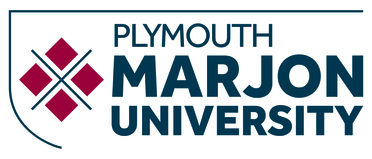Phonetic Transcription in Clinical Practice
Bates, Sally, Watson, Jocelynne, Heselwood, Barry and Howard, Sara (2024) Phonetic Transcription in Clinical Practice. In: The Handbook of Clinical Linguistics. Wiley, pp. 469-487. ISBN 9781119875901
|
Text
Phonetic Transcription in Clinical Practice.pdf Restricted to Repository staff only Download (1MB) | Request a copy |
Abstract
Phonetic transcription provides the data currently considered fundamental to the assessment, diagnosis, and treatment of people with atypical speech (e.g., Howard & Heselwood, 2002; Stemberger & Bernhardt, 2020). It delivers a principled approximation of the speaker's output in linear notation form which can identify areas of strength and weakness in the speaker's phonetic and phonological systems. This contributes to an understanding of a speaker's communicative profile and supports clinical decision‐making. Transcription is acknowledged to be effortful and time consuming (White et al., 2022). Providing speech samples to be transcribed can also be demanding for a speaker, especially so if they have concomitant medical and/or cognitive difficulties or if they have an inconsistent, developing or deteriorating profile requiring more frequent sampling. The Speech and Language Pathologist (SLP) needs to consider the level of detail to include in their transcription. Fortunately, the richness of acoustic information in speech, both in terms of its spectral and temporal structure, affords some discretion with regard to the type and amount of information on which to focus listening and notation. Being able to take a strategic view about which information will be most pertinent to an individual case will contribute to an efficiency and effectiveness which is axiomatic in the clinical setting. The SLP must also be sensitive to the possibility that in dealing with individual speakers there is potential for missing relevant data where collection is constrained by pre‐set criteria (Howard & Heselwood, 2002). These issues must be taken into account as they navigate the ongoing cost benefit analysis which inevitably accompanies the path to providing the speaker with an optimal outcome. This chapter considers the practice and value of clinical phonetic transcription in the clinic and in research. We start with an overview of the ways in which speech might be impaired and the range of professional issues which the SLP will need to consider for clinical purposes. We follow with a description of the notation systems most widely available, the multiple tiers of information which can be derived from a transcription and the additional information which can be provided by instrumental analysis techniques. We illustrate the value of transcription with reference to the most prevalent pediatric clinical population, that is, children with unexplained Speech Sound Disorder (SSD) and include consideration of the critical role of speech sampling in supporting effective data analysis. The chapter concludes with an appraisal of the current challenges in implementing phonetic transcription in the clinical setting.
| Item Type: | Book Section |
|---|---|
| Depositing User: | Ms Raisa Burton |
| Date Deposited: | 27 Mar 2024 15:35 |
| Last Modified: | 27 Mar 2024 15:35 |
| URI: | https://marjon.repository.guildhe.ac.uk/id/eprint/17819 |
| Related URLs: |
https://onlinel ... 2/9781119875949
|
Actions (login required)
 |
Edit Item |

